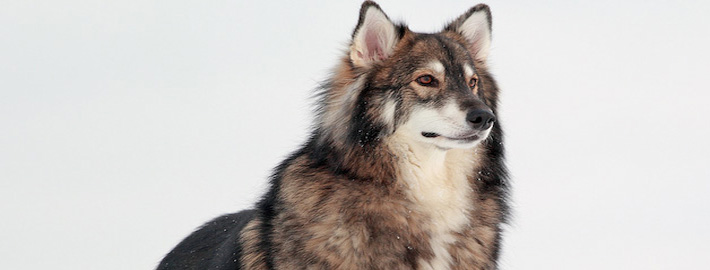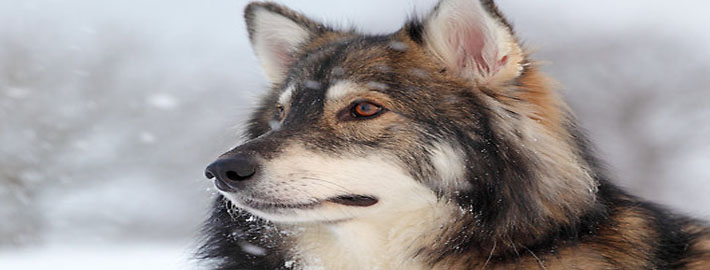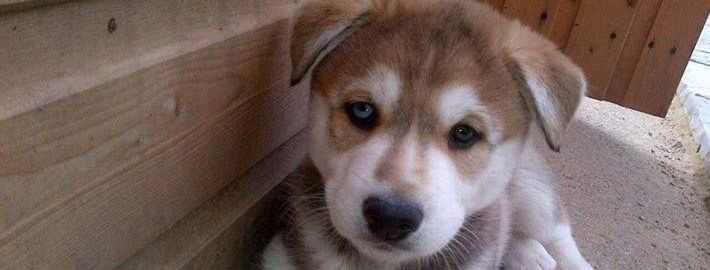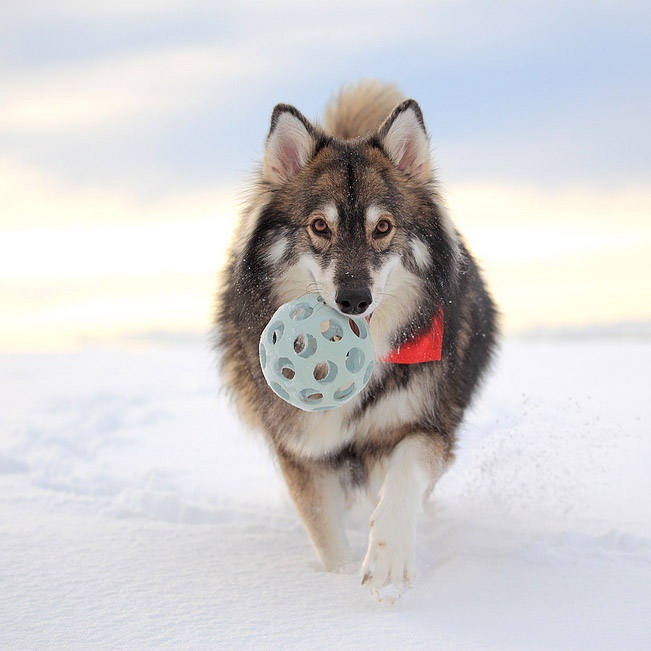What makes the Utonagan Unique?
Utonagan is a dog with a superb and well balanced temperament making for a wonderful family dog and companion. They love the company of people and a quite good with children. They can also be well socialised with other household pets from an early age. They are not a dog that likes to be left alone and problems may arise if they are, such as destructive behaviour and escaping.
Breed Groups
Page Contents
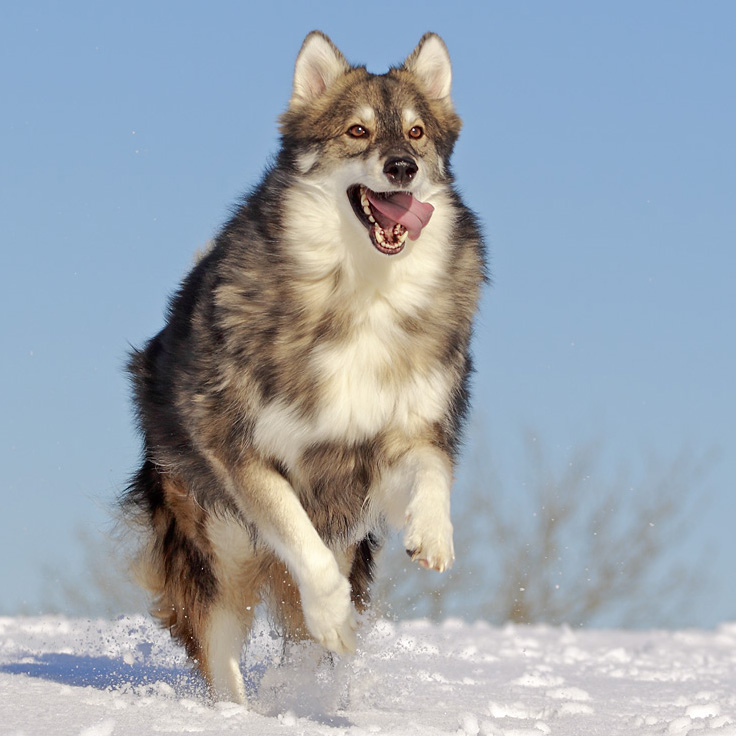
Is the Utonagan Right For You?
The Utonagan is a friendly, intelligent dog with a well balanced temperament which makes them wonderful companions and family dogs. They love the company of people and are quite good with children. Provided they are well socialised with other animals from an early age they can live quite happily with other household pets. They have a high pack mentality – they respect a pack hierarchy and need a firm, strong leader that they can respect.
In 5 Words
- Friendly
- Loving
- Playful
- Energetic
- Intelligent
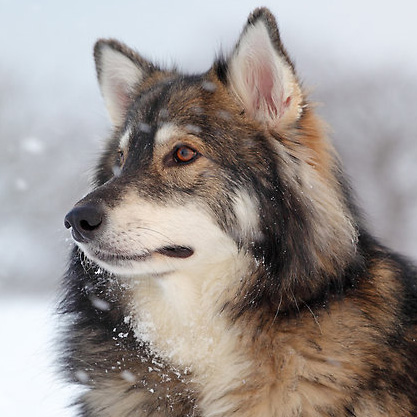
Characteristics
Learn About the Utonagan
Description
General Description
Utonagans are large, strong and muscular but are not heavy in build. While they are not wolves they are bred to look like them with a diversity of colors and an overall balance of power, speed and agility. The head should not be too broad or overly domed and should be in proportion to the size of the dog. The stop should be slight and not too severe. The muzzle is slightly longer than the skull and the lips should be firm, closing tightly. The nose is black. The eyes are almond in shape. Eye color ranges from brown to amber or yellow (preferred). Blue eyes are considered a fault. The ears are small in comparison to the head and are slightly rounded at the tip. They are set well spaced so as to create a triangular cast to the overall shape of the face. Soft ears are to be considered a fault. A long tapered muzzle with well developed powerful jaws is preferred. Flews should be black and tight. Complete dentition and perfect scissor bite, i.e. upper teeth closely overlapping lower teeth and set square to the jaws. Undershot or overshot jaws are highly undesirable. The lips are black. The neck is fairly long and strong with well developed muscles. The shoulders moderately sloping. The forelegs are long, straight and fine boned in comparison to the body. Viewed from the front the forelegs are narrowly spaced, parallel and straight with the elbows close to the body, turning neither in nor out. The length from the elbow to the ground is slightly more than the distance from the elbow to the withers. The pasterns are strong. Utonagans have a streamlined chest. Their body is fairly long with a level topline from the withers to the croup. A slight slope of the croup is acceptable. The ribs are well formed and long and the loins well muscled and taut with a slight tuck up. When viewed from the rear the hind legs are well spaced and parallel. The thighs are well muscled and powerful with a reasonable bend of the stifle with strong hocks. The paws are webbed. The front paws are large, oval in shape, turning neither in nor out when viewed from the front in a normal stance. The back paws are smaller and when viewed from the rear in a normal stance are preferably forward facing. Dew claws on the hind feet are to be considered a fault. The tail should be evenly furred but not overly feathered and should hang straight to the hock. It is carried straight and high when excited or at a trot. The tail should not curl over the back or be present in front of the vertical. Spitz/curly tails are to be considered a fault regardless of the degree of the curl. A black tail tip and black diamond shaped scent gland mark are preferable in colored dogs. The gait is long, loping and effortless with a powerful drive from the hindquarters. The coat is thick. A double coat is preferred, preferably with a mane during winter months. Short flat/long flat coat are both acceptable but less desirable. The guard hairs of the outer coat are straight and smooth lying. In longer coated dogs, excessive feathering around the ears, abdomen, legs and tail is not desirable. Coat colors include a grizzled combination of grey, black, tan and buff all with a clearly defined mask, single colors of black, white or apricot or white with a mask. Pied or ink marked colors are undesirable.
Short History of the Utonagan
As a relatively young breed, this dog is still being developed. Utonagans are a cross between Alaskan Malamutes, Siberian Huskies and German Shepherds. The first pair were brought to the UK in the late eighties but it is only in the last ten years, that the breed has become established. They were bred to be companions with the look of a wolf but as adaptable dogs they are now used for a variety of purposes, including working as PAT therapy dogs in hospices, schools and hospitals. It is not currently recognised by the UK KC.
Temperament
Utonagans are not guard dogs and were not bred for any specific working ability, but can be trained for many tasks. The original goal was to breed them with the looks of a wolf. Intelligent and friendly, they generally like all people and get along well with children. They are active, alert and capable of great endurance. Utonagans are energetic and enthusiastic towards most tasks with quick reactions. This breed may howl. The breed does best with an owner who can provide calm, consistent, firm leadership and daily mental and physical exercise.
Caring for Your Utonagan
General Health
There were no significant health issues reported to accompany this breed until about 2004, when certain dysfunctions that occur in most pedigree breeds such as cryptorchidism, and hip dysplasia began to appear. Although there were only a few reported cases and these conditions are not unique to the Utonagan, it was alarming due to the limited number of dogs currently in existence. The Utonagan Society also reports that the vast majority of dogs carrying deficient genes have either come directly from inbred mating or are descendants of former inbred litters. This was more than likely the result of unscrupulous breeding tactics by early breeders and a failure to report and/or stop breeding dogs that were diagnosed with a health deficiency. Luckily for this breed the leading and founding organization for the Utonagan, the Utonagan Society has banished the vast majority of these types of breeders from its ranks, and has instituted and enforced a strict breeding program to insure the continued survival of this breed and the delivery of healthy specimens free of these health defects. The Utonagan Society requires that all breeding stock test clear on the Kennel Club and British Veterinary Association hip (BVA/KC) and eye scheme prior to breeding. Currently the following health defects have been reported in this breed, and while the Utonagon Society is working diligently to remove specimens carrying defective genes, it is up to the potential owner to only purchase dogs from reputable breeders approved by the Utonagan Society and tested to be clear of health defects.
Grooming & Bathing
The coat of the Utonagan is very easy to manage requiring brushing only twice a week. However, during the spring or late summer when the dog is moulting (blowing its coat), it will require more attention.
Exercise & Training
The Utonagan can be quite boisterous and energetic in play and does very well in activities such as flyball and agility which focuses its energy. They have a high energy drive so regular exercise is required. They benefit from at least two walks a day but thy have the stamina to be suited to extended periods of exercise. Due to their thick coats, extra care must be taken when exercising these animals in hot weather as they can overheat easily.

